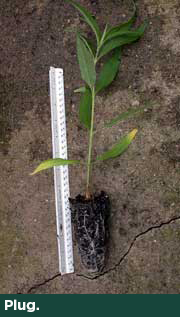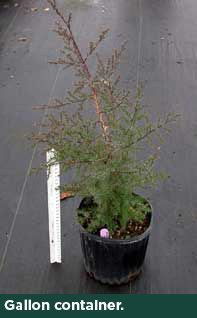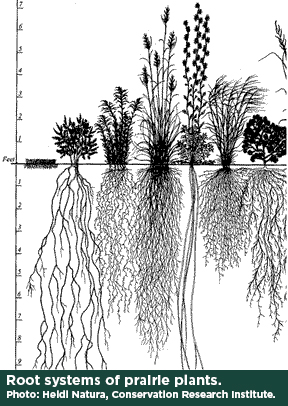Establishment of Rooted Plant Material
Guidelines for small areas, less than 500 square feet:
- Time to establish from plant material: 1-2 years
- For best results, consult with a native plant producer before selecting plant species for your planting.
Select and analyze your site
Consider whether you would like the size of the planting to grow over time, and whether you want to include shrubs and areas with grasses.
Determine soil type (sand, silt, clay, muck), drainage, moisture, slope, and amount of sunlight. Take a soil sample and test for pH and organic matter. Neither a droughty, infertile subsoil nor a tight wet clay soil is suitable for many wildflower species. Most prairie plants require at least 6 hours a day of full sun, so many of these plants will not do well in north-facing or very shady locations. If you have a shady site, consider native flowering woodland species.
Plan and design your planting
With information about your site, you can choose plant species that are likely to establish well in site conditions. Choose wildflower/grass species for a permanent planting that are perennial, native to Michigan, and grown as close to your area as possible for better adaptability. Select a variety of plants that will bloom throughout the growing season. If you have site with high erosion, plant a cover crop for quick cover, or cover the area with 1-2 inches of straw mulch or an erosion blanket that is staked to hold it in place. Consider whether you prefer plug, quart, or gallon container grown plants. Your native plant producer can help you weigh the greater cost of larger plants with the benefit of more rapid plant establishment.



Plant spacing will depend on how much the plant spreads and fills in as it grows. Contact your native plant producer for recommendations.
 Check availability of plant species with native plant producers. Some species may not be available immediately but some producers will grow them in larger quantities by request. Expect to notify the producer in early spring and receive plant plugs in fall.
Check availability of plant species with native plant producers. Some species may not be available immediately but some producers will grow them in larger quantities by request. Expect to notify the producer in early spring and receive plant plugs in fall.
Although grasses may seem unnecessary, they are an important part of your planting. Root systems of grasses work well with those of wildflowers and shrubs, helping to prevent weed growth, and grasses provide late fall and winter cover in a planting.
Plant
The best times to plant perennials are in the spring and early fall. This is because rain is most likely during spring and fall months, and moderate temperatures will not put heat stress on plants that are not yet established. Early spring flowers often do better if they are planted in the fall. If you are able and willing to water plants deeply every week they will survive if planted any time during the growing season.
Break apart root material so that roots are no longer the shape of the container and roots grow vigorously where you plant them. Firmly press soil around the roots to encourage root: soil contact and prevent roots from drying, and water plants thoroughly just after planting.
Put down 1-2 inches of straw or woodchip mulch to help control weeds. A product called Preen® may also be used after planting and before mulch application to control weed seed germination.
Maintenance
Water plants with a deep, slow watering weekly in the first several weeks after planting if it doesn’t rain. Watering during periods of drought in the first year is not needed with a fall planting, but it will help plant survival in spring plantings. Many native plant species, especially grasses, have very deep root systems that include a tap root, so once established they will not require watering.
Fertilization of native plant species is not required. They are adapted to deal with low nutrients and most will do fine without fertilization. One or two weedings in the first growing season should control weeds; this process can be time consuming, just as in any garden. Once plants are established little further weeding should be needed.
Trim shrubs to maintain the shape and size you desire. Many species may be cut back nearly to the ground to encourage branching; ask your native plant producer whether your particular species will tolerate this.



 Print
Print Email
Email